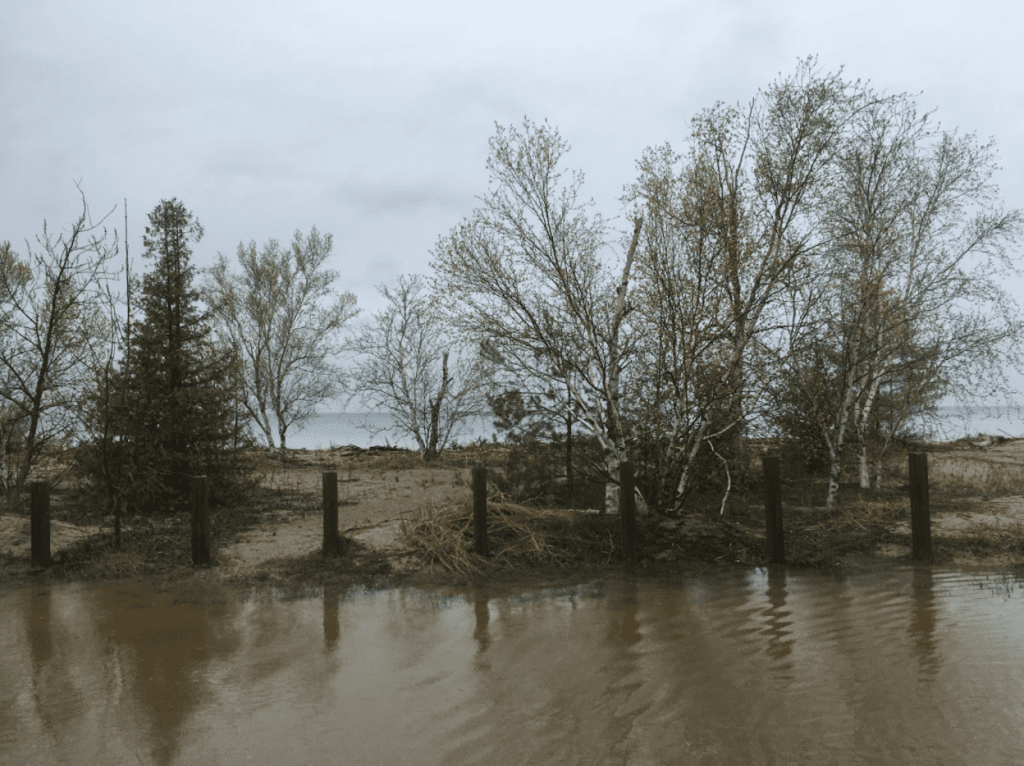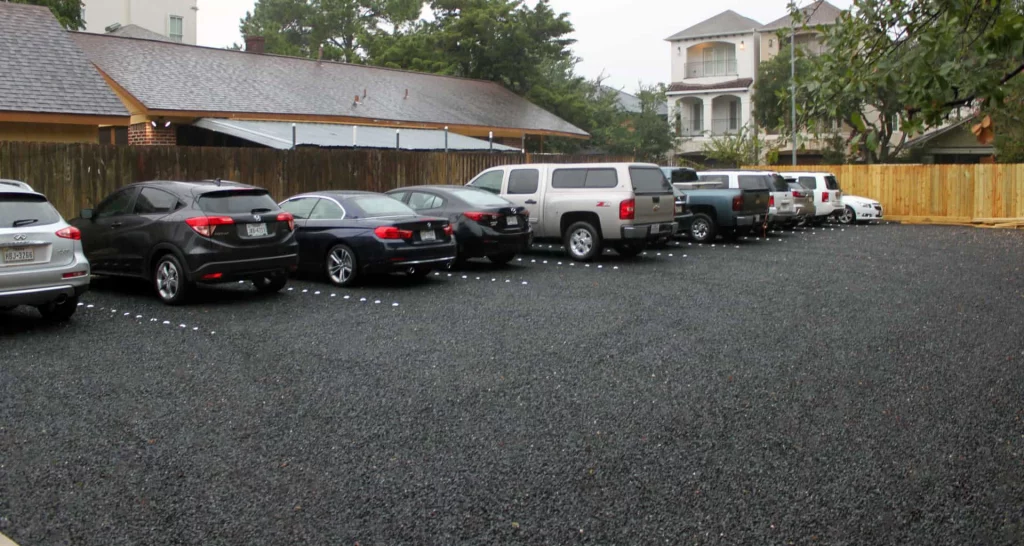If you’ve ever had to design a parking lot or have one installed somewhere, you know drainage is almost always a large part of the process.
Parking lots are often made from impermeable materials like asphalt and concrete, which means that they do not let water pass through them and require additional measures to deal with stormwater and runoff. For lots with low points where water can pool, having a drainage system in place is vital to maintaining a functional and safe parking lot.
There are many ways in which parking lot owners can choose to manage their drainage, but not all of them are equally effective or viable. In order to help you design the cleanest, most functional lot possible, let’s take a look at how you can prevent parking lot flooding.
Flooding is a Major Issue in Parking Lots
Flooding is obviously less than ideal in a parking lot, but it can cause more issues than you might realize. First, flooding can speed up the deterioration of your lot. When standing water is left in a parking lot, it can infiltrate the surface of your lot and quickly cause deterioration.
Water causes erosion and can wash away subsurface soil, leading to ruts, potholes, and even massive sinkholes if left unchecked. It can also widen cracks in the parking lot surface if exposed to freeze/thaw cycles.
Liquid water fills the cracks in the surface of a lot, then expands and widens those cracks when it freezes. Once it unfreezes, the now widened crack is filled with even more water, and the cycle repeats itself until the cracks penetrate the surface and let water into the subsurface.

Water damage creates more frequent maintenance expenses, which are not cheap. Also, standing water can present a health threat to people who use your lot. Someone may accidentally suffer an injury as a result.
Ruts and potholes will also damage the suspension and axles of the vehicles that drive over them as well.
Parking lot flooding presents an unsightly, run-down, unprofessional image for your lot. This gives a bad impression and could cost you business if someone is turned off by the look of your lot or the thought of having to navigate through your flooded parking lot.
How to Prevent a Parking Lot From Flooding
There are many ways to deal with parking lot stormwater. The most common is by sloping your lot towards spot drains or trench drains that are connected to a local sewer system that will handle the stormwater. This places a burden on the system, though, and is not very eco-friendly in general.
You may also have a stormwater retention pond on the property where it is funneled, and slowly released into the local sewers. This is very expensive, however.
Permeable Pavement: The Best Way to Prevent Flooding in Your Parking Lot
Preventing parking lot flooding should be one of the first questions on any lot owner’s mind. The solution to the problem is simple, with permeable pavement. Permeable pavers allow stormwater to drain directly through the surface of your lot and into the soil below.

They are one of the most effective and eco-friendly parking lot flooding solutions by far. For example, TRUEGRID PRO LITE and TRUEGRID PRO PLUS pavers are 98%-permeable and can handle the heaviest of rainstorms with ease.
For those of you wondering why the flooding in your lot is ponding, it’s because the pavement is impermeable and the drainage is inadequate. Using TRUEGRID gravel-filled pavers as a parking lot solution will eliminate the need for additional drainage and save you tons of money on maintenance as well.
Asphalt and concrete need to be resealed and resurfaced every handful of years, with most lots not lasting longer than 30 years. TRUEGRID permeable pavement, on the other hand, will last up to 60 years with almost no maintenance required. Made from 100%-recycled plastic, TRUEGRID pavers are the most durable and eco-friendly paving solution on the market.
They can be filled with any color gravel you’d like which provides incredible stylistic diversity. The end result of a TRUEGRID parking lot installation is a professional, functional, clean-cut parking lot that’s completely impervious to flooding.

The installation of TRUEGRID permeable pavers is also incredibly fast and can be completed in 1-2 days in many cases. It requires very little heavy equipment and costs less than asphalt and concrete because of how little time and effort it takes. Once in place, these pavers will not shift, buckle, warp, or compromise the functionality of your parking lot in any way.
TRUEGRID Can Eliminate Your Flooding Problems for Good
If you want the best parking lot money can buy, don’t settle for expensive, fragile materials like asphalt and concrete. Instead, build a parking lot that will attract customers and last over half a century. If you want to eliminate parking lot flooding and maximize the value of your lot, call TRUEGRID today to get in touch with a pavement professional who can help you get started.



